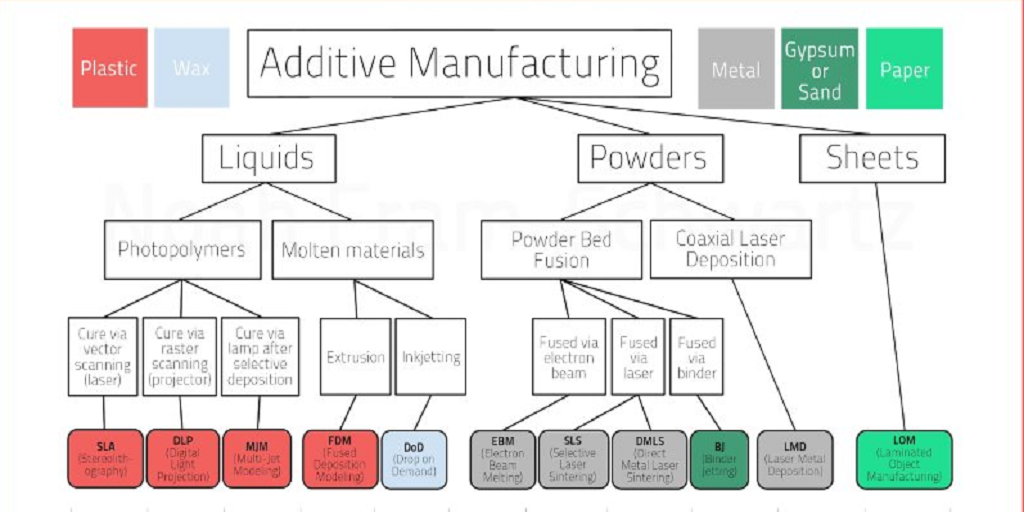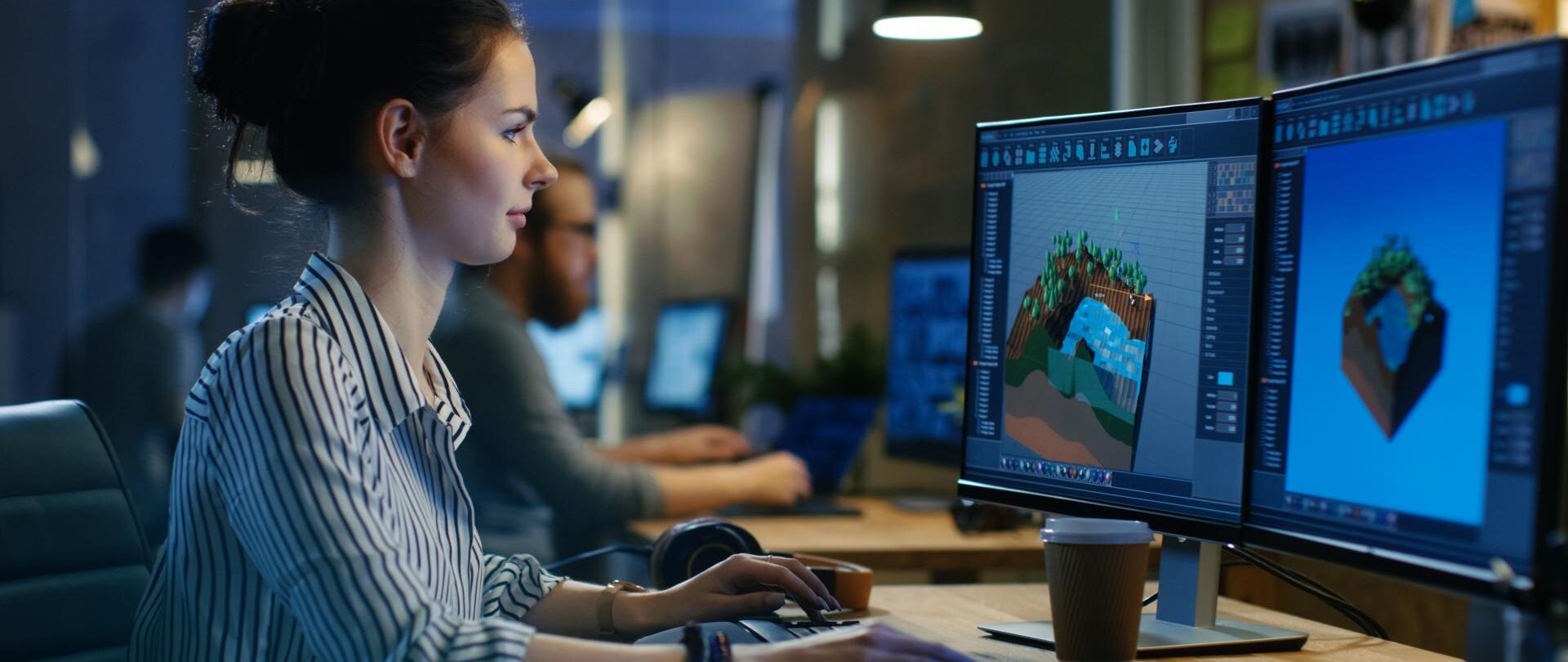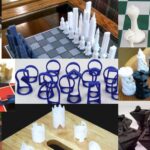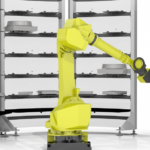

For those unfamiliar with 3D printing, the technology can seem a bit overwhelming. It can be hard to know where to start when trying to learn about the field, so it’s always helpful when someone expert in the field breaks it into manageable pieces. Every once in a while, we at 3DPrint.com like to offer a few basic introductions or refresher courses for those who are new to 3D printing. Today’s lesson is courtesy of Noah Fram-Schwartz, former 3D Design Lab Lead at Google. He recently created a helpful chart to simplify some of the most common materials involved in 3D printing, or additive manufacturing, particularly at the industrial level–and a look at some of the big names specializing in these technologies.
“Explaining the different types of additive manufacturing (AM) processes can be difficult as there’s significant overlap with materials and hardware between the different technologies,” says Fram-Schwartz. “I’ve created this diagram to make this seemingly sophisticated network of processes palatable for those new to the space.”
To start familiarizing oneself with additive manufacturing, it’s important to understand the different types of materials used. Fram-Schwartz’s chart breaks it down into three broad categories: liquids, powders and sheets. Liquids can be comprised of melted plastic, glass or metal. Plastic resins are the cheapest and most common material used in 3D printing. Solid plastics are fed into the printer in either pellet or filament form, melted, and extruded in liquid form, layer by layer. Once the liquid is extruded onto the print platform, it must be quickly cured, or hardened, so that the next layer can be laid down on top.

The plastics used in 3D printing are typically photopolymers, which, as their name suggests, are polymers that change their structure when exposed to ultraviolet light, so when the layers of plastic resin are extruded, they are hardened by light exposure. Depending on the type of photopolymer, different methods of light exposure may be used: stereolithography (SLA), Digital Light Projection (DLP) or Multi Jet Modeling (MJM). These materials, Fram-Schwartz points out, are not typically used in industrial end-use or production parts, due to fact that their photosensitive properties are so easily affected by heat and light.
Powders are commonly used in metal additive manufacturing. Powders, when extruded, are fused into a solid material using lasers, electron beams, or liquid binding agents. The types of powder fusion include Electron Beam Melting (EBM), Selective Laser Sintering (SLS), Direct Metal Laser Sintering (DMLS) and Binder Jetting (BJ.)
Finally, there is the form of additive manufacturing known as sheet lamination. This form involves laying down sheets of paper or metal and bonding them together by welding, in the case of metal, or adhesive, in the case of paper. The process of welding metal used in sheet lamination is known as Ultrasonic Additive Manufacturing (UAM), and the process used for paper is called Laminated Object Manufacturing.
Fram-Schwartz is quick to point out that each form of additive manufacturing has its limitations. Most 3D printed objects can only be formed from a single material, with the exception of MJM, FDM (Fused Deposition Modeling), and LMD (Laser Metal Deposition, another method used in metal additive manufacturing). Some processes, such as SLA, DLP, EBM, and DMLS, require support materials to keep the prints from losing their shape or collapsing during the printing process.
While the chart provided by Fram-Schwartz does not cover all of the processes used in 3D printing, it does give a pretty good look at some of the more common ones. You can also check out our detailed overview on 3D printing here, if you’d like to read more in-depth descriptions of some of the most common printing methods. If you’re considering an investment in a 3D printer, it’s important to be as informed as possible so that you can make the right choice for your needs. Discuss this article in the 3D Printing Materials forum on 3DPB.com.
If you're looking for affordable 3D visualization services in the USA, our platform provides an ideal solution for all your architectural and real estate needs. Through our service, you can access high-quality 3D renderings at competitive prices without compromising on quality. Whether you need interior visualizations, exterior renderings, or architectural animations, our team ensures that you get professional results that fit within your budget. With our support, you can make your projects visually stunning while saving on costs, all with a quick and straightforward process.
Through our site, you can easily order affordable 3D visualizations for your projects, whether for a residential property, commercial development, or architectural design. We understand the importance of staying within budget, and that's why we offer tailored solutions to ensure you get the best value for your investment. Our experts work efficiently to provide you with realistic, photorealistic 3D images that will elevate your presentations and attract clients, making your property stand out in the market.






